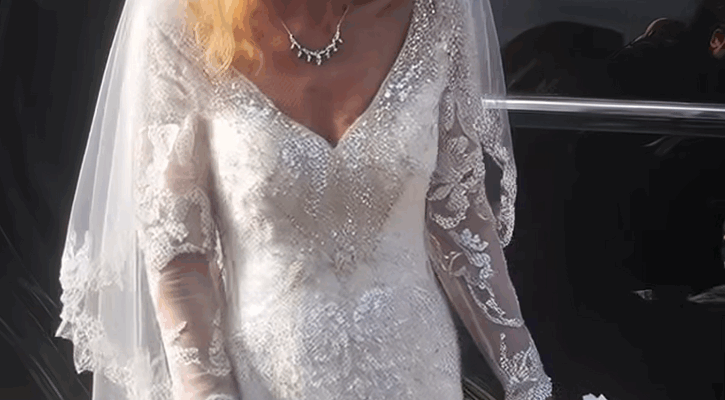When Emily got engaged, she knew her wedding wouldn’t just be about flowers, vows, and a dance floor. It would also involve her mother, Dorothy—a woman who loved the spotlight almost as much as she loved control. Emily adored her mom, but growing up, she had learned one truth: Dorothy had a way of making every big moment her own. So when Emily overheard her mother bragging to relatives that she planned to wear her own wedding dress to her daughter’s ceremony, her heart sank.
It wasn’t just any dress—it was a dramatic, lace-covered ball gown Dorothy had worn decades earlier. Emily could already picture it: her mom basking in gasps and stares, turning what was supposed to be Emily’s day into a stage for herself.
At first, Emily considered confronting her directly. But she knew that path: a heated argument, guilt trips, tears, and possibly a fractured relationship right before the wedding. Instead, she took a different route—quiet, clever, and, as it turned out, brilliant. Her wedding invitations went out with one unusual request: “Ladies, please feel free to wear white—yes, even wedding gowns!” The guests were baffled. Some thought it was a typo. Others laughed at the absurdity.
But Emily stuck to her decision, explaining only that she wanted a “unique, memorable” celebration. One by one, her friends and family agreed to play along. The day of the wedding arrived. The venue filled with women in ivory, cream, champagne, and pure bridal white.
Some wore simple dresses, others borrowed vintage gowns, and a few even rented elaborate wedding dresses for the occasion. It was surreal—like walking into a room full of brides. And then came Dorothy. She swept in with a grand flourish, draped in her original wedding gown, clearly expecting whispers of awe and admiration. But instead of stealing the show, her moment fell flat. She froze in the doorway, scanning the crowd, realizing with horror that nearly every woman in the room looked just like her. The spotlight she craved had been swallowed whole by the sea of white. That was the moment Emily made her entrance.
She stepped into the aisle wearing a breathtaking gown of deep red and shimmering gold, the fabric catching the light with every move. Against the ocean of white, she looked like fire—radiant, undeniable, unforgettable. Every head turned, every eye locked onto her. There was no mistaking who the true bride was. Throughout the ceremony, Dorothy stayed uncharacteristically quiet. She didn’t make a scene, didn’t try to reclaim attention. Her plan had dissolved, and there was nothing left to do but sit in silence as her daughter took center stage. The rest of the evening was everything Emily hoped for—joyous, warm, filled with laughter and dancing. Guests praised her creativity, liked how she had handled a tricky situation with grace and wit. Emily hadn’t needed a confrontation, a fight, or a cruel jab. She had simply shifted the stage so that the focus returned where it belonged: on love, commitment, and the beginning of a new life. And as she danced with her husband under the golden lights, Emily realized she had done more than outsmart her mother. She had proven something bigger: sometimes the most powerful way to deal with drama isn’t anger or revenge, but quiet confidence that cannot be overshadowed.
